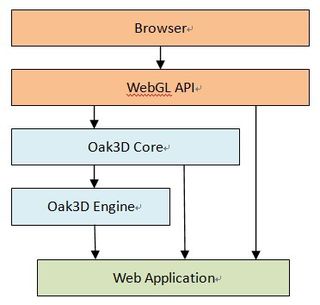
OpenGL is a cross-language, cross-platform application programming interface (API) for rendering 2D and 3D vector graphics. The API is typically used to interact with a graphics processing unit (GPU), to achieve hardware-accelerated rendering.
XSLT is a language originally designed for transforming XML documents into other XML documents, or other formats such as HTML for web pages, plain text or XSL Formatting Objects, which may subsequently be converted to other formats, such as PDF, PostScript and PNG. Support for JSON and plain-text transformation was added in later updates to the XSLT 1.0 specification.
ScriptBasic is a scripting language variant of BASIC. The source of the interpreter is available as a C program under the LGPL license.
OpenGL Performer, formerly known as IRIS Performer and commonly referred to simply as Performer, is a commercial library of utility code built on top of OpenGL for the purpose of enabling hard real-time visual simulation applications. OpenGL Performer was developed by SGI which continues to maintain and enhance it. OpenGL Performer is available for IRIX, Linux, and several versions of Microsoft Windows. Both ANSI C and C++ bindings are available.
Direct3D and OpenGL are competing application programming interfaces (APIs) which can be used in applications to render 2D and 3D computer graphics. As of 2005, graphics processing units (GPUs) almost always implement one version of both of these APIs. Examples include: DirectX 9 and OpenGL 2 circa 2004; DirectX 10 and OpenGL 3 circa 2008; and most recently, DirectX 11 and OpenGL 4 circa 2011. GPUs that support more recent versions of the standards are backwards compatible with applications that use the older standards; for example, one can run older DirectX 9 games on a more recent DirectX 11-certified GPU.

Java OpenGL (JOGL) is a wrapper library that allows OpenGL to be used in the Java programming language. It was originally developed by Kenneth Bradley Russell and Christopher John Kline, and was further developed by the Game Technology Group at Sun Microsystems. Since 2010, it has been an independent open-source project under a BSD license. It is the reference implementation for Java Bindings for OpenGL (JSR-231).
Windows Presentation Foundation (WPF) is a free and open-source graphical subsystem originally developed by Microsoft for rendering user interfaces in Windows-based applications. WPF, previously known as "Avalon", was initially released as part of .NET Framework 3.0 in 2006. WPF uses DirectX and attempts to provide a consistent programming model for building applications. It separates the user interface from business logic, and resembles similar XML-oriented object models, such as those implemented in XUL and SVG.

OpenGL Shading Language (GLSL) is a high-level shading language with a syntax based on the C programming language. It was created by the OpenGL ARB to give developers more direct control of the graphics pipeline without having to use ARB assembly language or hardware-specific languages.
GlueGen is a Java tool which automatically generates the Java and Java Native Interface (JNI) code needed to call C libraries from Java code. It reads in ANSI C header files and GlueGen configuration files, and emits C code. As JNI can be complex, Gluegen simplifies the process of binding Java to C native libraries.
Java Binding for the OpenGL API is a JSR API specification for the Java Platform, Standard Edition which allows to use OpenGL on the Java. There is also Java Binding for the OpenGL ES API for the Java Platform, Micro Edition.
Web2py is an open-source web application framework written in the Python programming language. Web2py allows web developers to program dynamic web content using Python. Web2py is designed to help reduce tedious web development tasks, such as developing web forms from scratch, although a web developer may build a form from scratch if required.
XQuery is a query and functional programming language that queries and transforms collections of structured and unstructured data, usually in the form of XML, text and with vendor-specific extensions for other data formats. The language is developed by the XML Query working group of the W3C. The work is closely coordinated with the development of XSLT by the XSL Working Group; the two groups share responsibility for XPath, which is a subset of XQuery.

Google Closure Tools is a set of tools to help developers build rich web applications with JavaScript. It was developed by Google for use in their web applications such as Gmail, Google Docs and Google Maps. As of 2023, the project had over 230K LOCs not counting the embedded Mozilla Rhino compiler.
SIP is an open source software tool used to connect computer programs or libraries written in C or C++ with the scripting language Python. It is an alternative to SWIG.

Oak3D is a free JavaScript library for 3D graphics development based on the HTML5 WebGL standard, dedicated in realizing the Web3D applications with GPU acceleration for all the front-end developers in an easy and efficient way.
Windows Runtime (WinRT) is a platform-agnostic component and application architecture first introduced in Windows 8 and Windows Server 2012 in 2012. It is implemented in C++ and officially supports development in C++, Rust/WinRT, Python/WinRT, JavaScript-TypeScript, and the managed code languages C# and Visual Basic .NET (VB.NET).
The following outline is provided as an overview of and topical guide to C++:
Seed7 is an extensible general-purpose programming language designed by Thomas Mertes. It is syntactically similar to Pascal and Ada. Along with many other features, it provides an extension mechanism. Seed7 supports introducing new syntax elements and their semantics into the language, and allows new language constructs to be defined and written in Seed7. For example, programmers can introduce syntax and semantics of new statements and user defined operator symbols. The implementation of Seed7 differs significantly from that of languages with hard-coded syntax and semantics.



